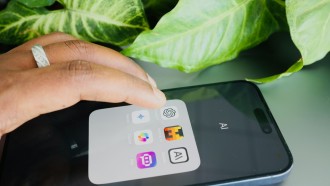
The average employee spends hours every day going through their emails. However, even though emails are done on a daily basis and are one of the most common routines now, a lot of professionals still don't know how to use email appropriately.
In fact, because of the massive volume of messages you are reading and writing every day, you may be prone to making embarrassing errors, which can have serious consequences.
Below are the do's and don'ts of email etiquette.
Do Have a Short and Clear Subject Line
Most people have to compete with the hundreds of emails clogging their inbox daily, so the clearer the subject line is, the more likely the message will be read.
According to Business Insider, a lot of people decide which email to read first based on the subject line. If it sounds urgent and straight to the point, it will definitely be read first.
Also Read: 3 Free to Use Tools That Can Help Increase Your Brand Awareness
Don't Forget to Put Your Signature
Every email that you send must have a signature that tells the recipient who you are and how they can contact you. You can set it up to automatically appear at the end of every email sent.
According to the International Data Corporation (IDC), workers spend 28% of their workweek checking their emails. This is why it is best to add your signature so they will automatically know where they can reach you best.
You also need to include all of your contact details, like email address, office address, and phone numbers, so the recipient does not have to look them up themselves.
In 2022, TechTimes reported how HR created a hybrid email culture using e-signatures.
If you want to create a signature easily, you can use the signature generator for free for your emails.
Do Add Professional Salutation
Using "Hey." is not professional, no matter how well you know the recipient. You can use either "Hi" or "Hello" instead. To be more formal, you can use "Dear (insert name)."
You can also use the recipient's name in the salutation, but remember not to use their nickname. You should only use their full first name, as advised by Entrepreneur.
Don't Use Humor in Your Email
Humor does not translate well through email, especially in a professional setting. The other party may misinterpret what you think is funny or take it as sarcasm because there is no accompanying vocal tone or facial expressions.
It is best to leave the humor out of business communications when you are in doubt.
Do Proofread Your Message Before Sending
Do not be surprised if you are judged by how you compose an email. For example, if your email has a lot of misspelled words and grammatical errors, you may be perceived as careless, sloppy, or even uneducated.
Make sure that you check your grammar, spelling, and message before hitting send.
Don't Assume the Recipient Immediately Knows About the Topic
Create your message as a stand-alone note, even if it is in response to an email thread. This means you should not reply with one-liners.
Always include the subject of any references to previous emails, conversations, or research. It can be time-consuming and frustrating to look back at the email thread just to get the context.
Your recipient may have a lot of emails coming in each day, and likely won't remember the events leading up to your email, so it is best always to include context.
Last but not least, we recommend that you implement DMARC. This email authentication mechanism will help you build trust with your partners and ISPs and improve your email deliverability.
Related Article: Wet Signatures vs. Electronic Signatures - A Deep Dive
This article is owned by Tech Times
Written by Sophie Webster
* This is a contributed article and this content does not necessarily represent the views of techtimes.com





